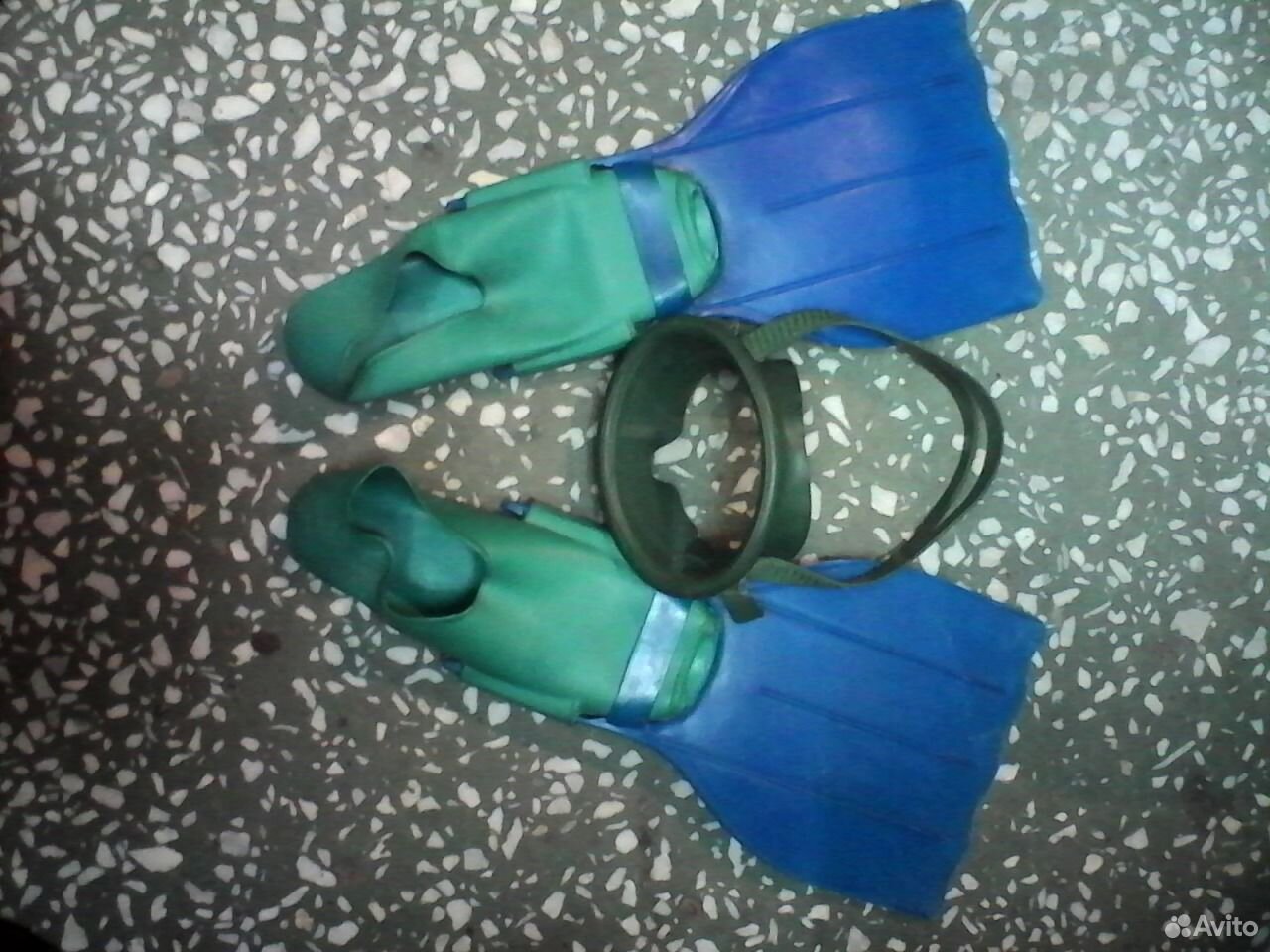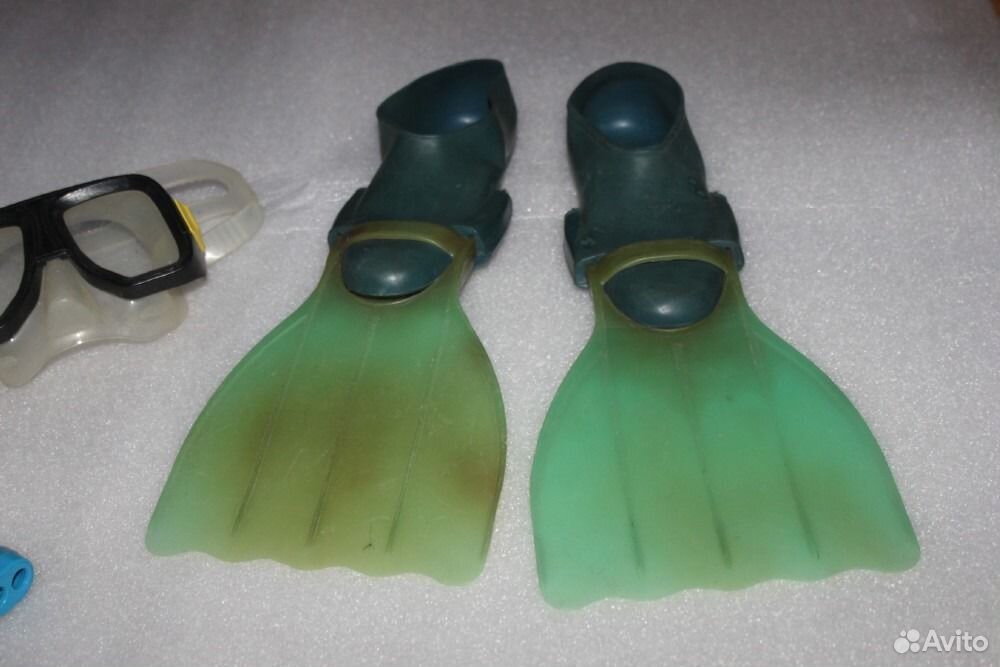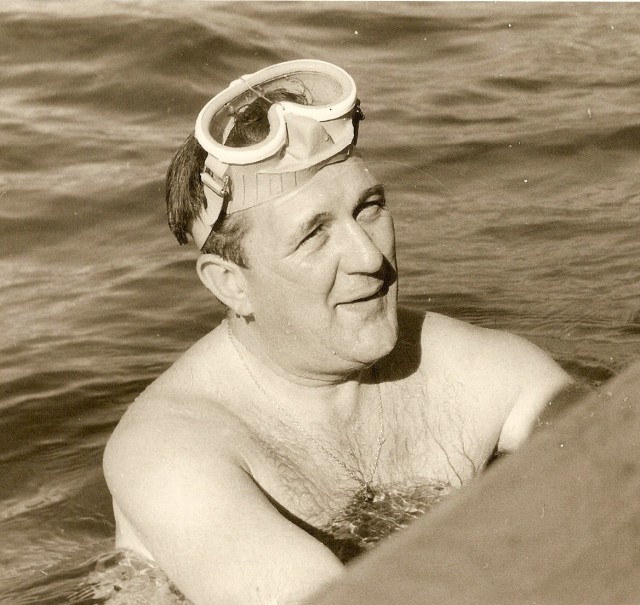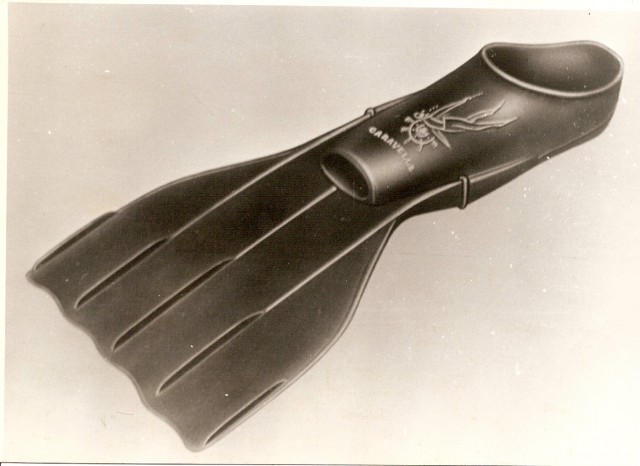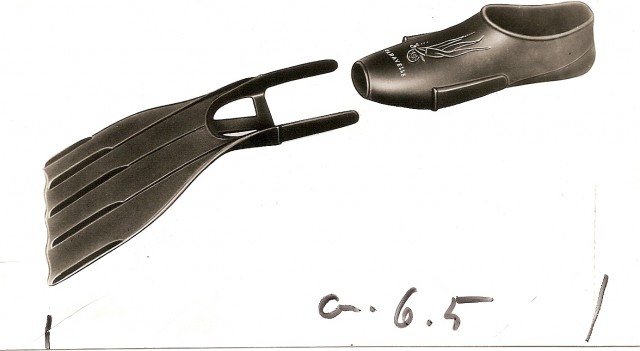David Wilson
Contributor
Time to start a new "Soviet Fins" thread, this time focusing on Russia's second city of Leningrad, now known as St Petersburg. Three enterprises there manufactured fins and the first message in this thread concentrates on the output of the "Krasny Treugol'nik" (Красный треугольник) plant. "Красный треугольник" is Russian for "Red Triangle" and the enterprise's core product was footwear. Here is the factory building:

Below is the original company, which was founded in the late nineteenth century as the Russian-American Rubber Manufactory:

Here is the company trade mark including the red triangle logo:

In addition to helping Mosrezina with the production of Model 4 fins (below),

the Red Triangle plant made one fin model of its own, the closed-heel, closed-toe "Amfibia" (Амфибия). "Амфибия" means "Amphibian". Here is a picture of the fin:


The triangle logo can be seen on the second image above showing the sole of the fin.
Here are two period descriptions of the "Amfibia":
1. Made of a special blend of rubber and plastic, which loses its elasticity, reducing the stiffness of the fins, when temperatures rise above +15-20°C. The fins have shallow foot pockets, so when exerting maximum effort, the fins fall off the feet. Due to their lightness and their reasonably large working surface, the fins are widely used in underwater sports.
2. This hard, closed and semi-heavy fin from the Leningrad ‘Krasny Treugol’nik’ [Red Triangle] plant is the lightest of all the closed-type fins. The fin has a good shape with hydrodynamic contours. The working area of the fin blade inclines at a roughly 25° angle. The shoe used to attach the foot to the fin is quite comfortable and retains the fin well when swimming.
The distinctive feature of this fin is that unlike its Moscow counterparts it is manufactured from a plastic / rubber blend. As we shall see later in this thread, the use of plastic in fin-making was unique to Leningrad factories. The Leningrad "Sport" enterprise made two kinds of fins, both incorporating plastic, and this will the subject of the next message in this thread.
I'll sign off with another image from one of my Soviet diving books. I expect my readers will know immediately what the device is, but it may still be of interest for comparison with its western equivalents.


Below is the original company, which was founded in the late nineteenth century as the Russian-American Rubber Manufactory:

Here is the company trade mark including the red triangle logo:

In addition to helping Mosrezina with the production of Model 4 fins (below),
the Red Triangle plant made one fin model of its own, the closed-heel, closed-toe "Amfibia" (Амфибия). "Амфибия" means "Amphibian". Here is a picture of the fin:
The triangle logo can be seen on the second image above showing the sole of the fin.
Here are two period descriptions of the "Amfibia":
1. Made of a special blend of rubber and plastic, which loses its elasticity, reducing the stiffness of the fins, when temperatures rise above +15-20°C. The fins have shallow foot pockets, so when exerting maximum effort, the fins fall off the feet. Due to their lightness and their reasonably large working surface, the fins are widely used in underwater sports.
2. This hard, closed and semi-heavy fin from the Leningrad ‘Krasny Treugol’nik’ [Red Triangle] plant is the lightest of all the closed-type fins. The fin has a good shape with hydrodynamic contours. The working area of the fin blade inclines at a roughly 25° angle. The shoe used to attach the foot to the fin is quite comfortable and retains the fin well when swimming.
The distinctive feature of this fin is that unlike its Moscow counterparts it is manufactured from a plastic / rubber blend. As we shall see later in this thread, the use of plastic in fin-making was unique to Leningrad factories. The Leningrad "Sport" enterprise made two kinds of fins, both incorporating plastic, and this will the subject of the next message in this thread.
I'll sign off with another image from one of my Soviet diving books. I expect my readers will know immediately what the device is, but it may still be of interest for comparison with its western equivalents.
Last edited:




